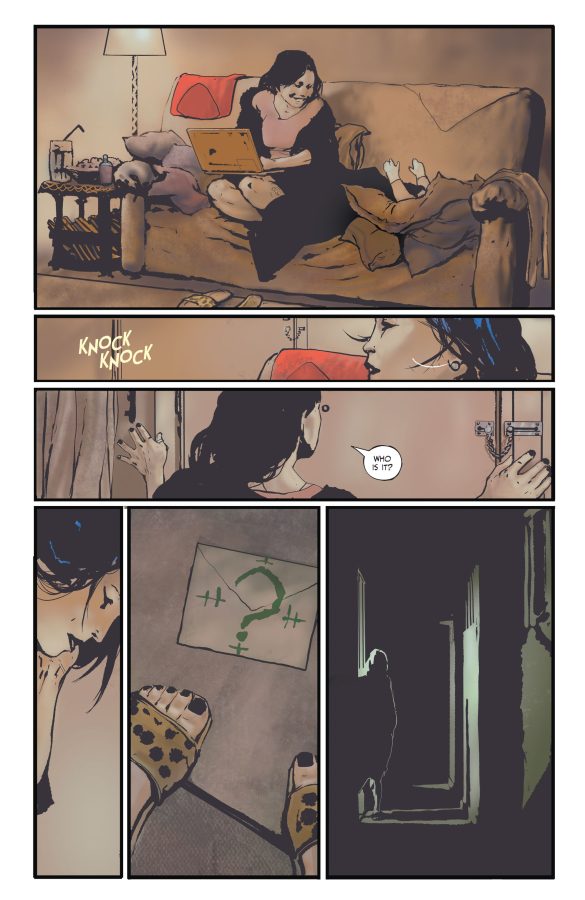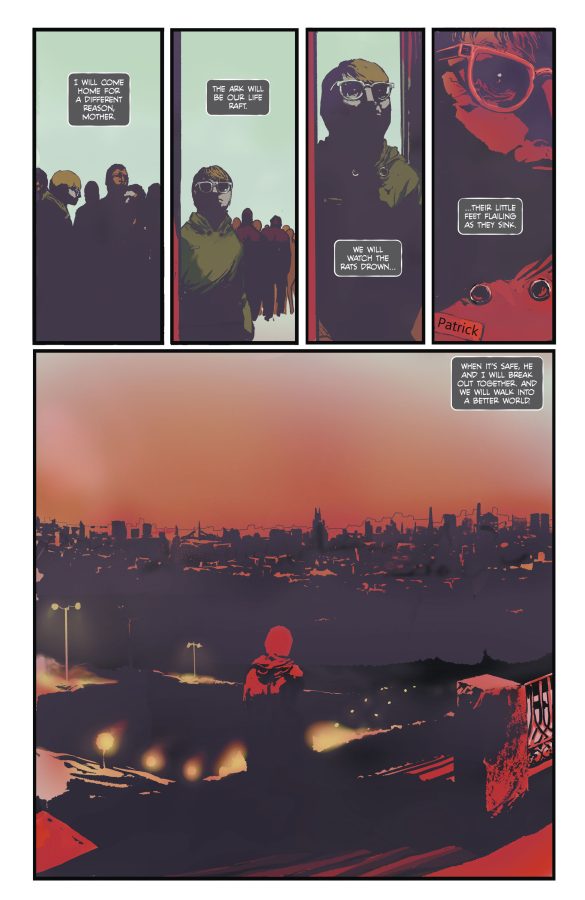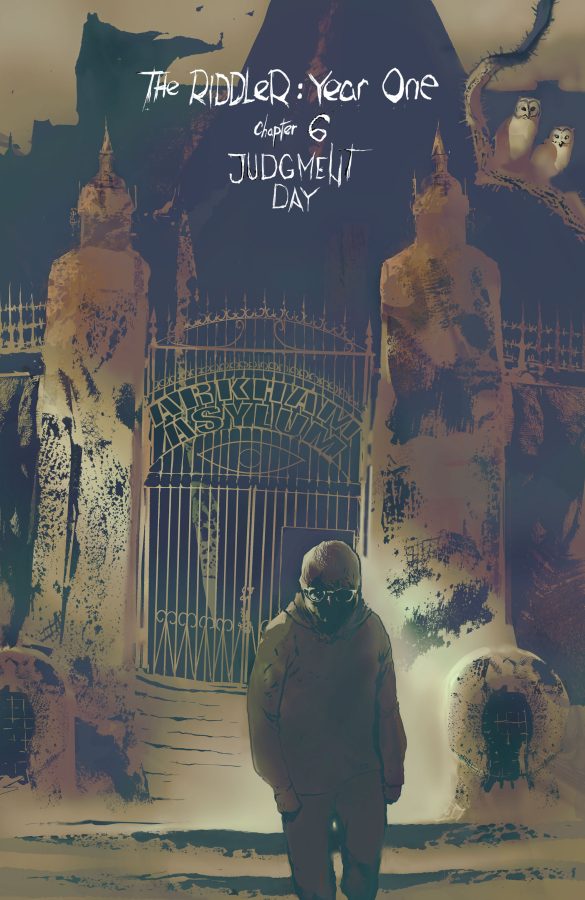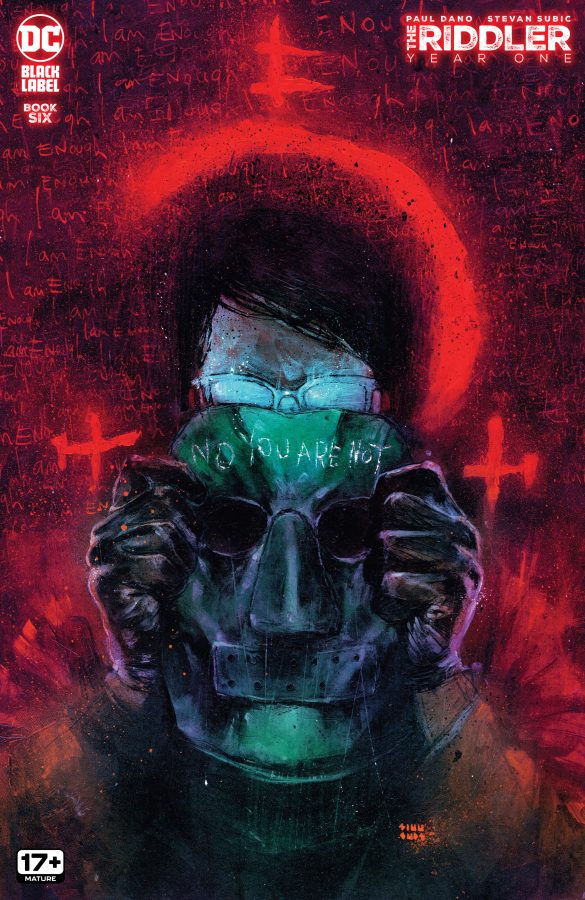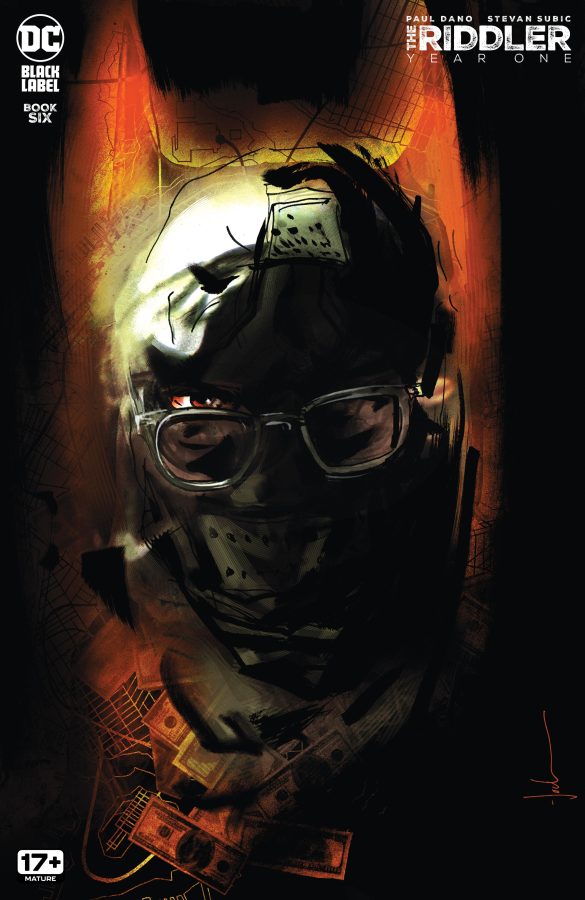“Judgement Day”
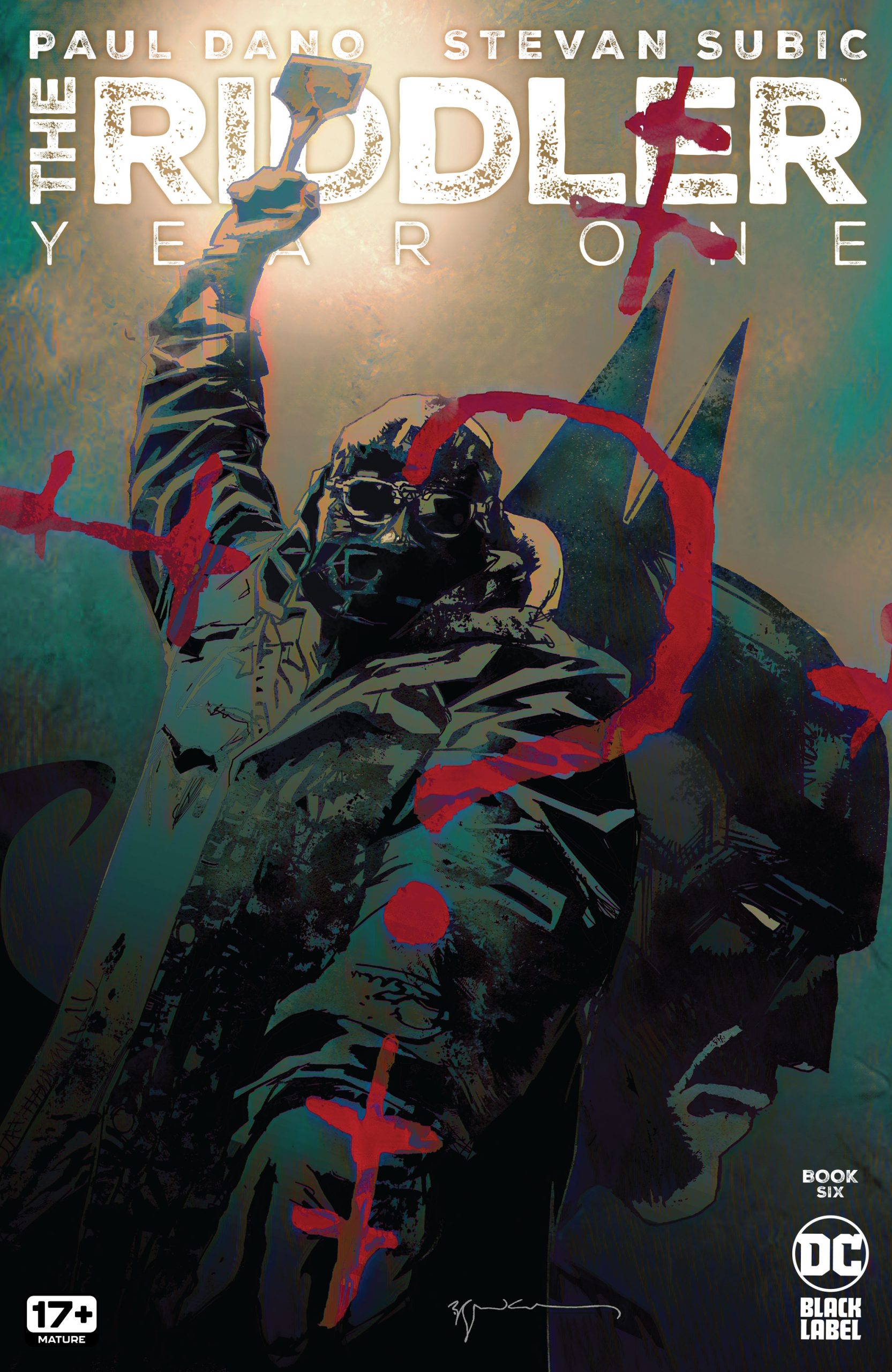 Writer: Paul Dano
Writer: Paul Dano
Artist: Stevan Subic
Letterer: Clayton Cowles
Review by Steven Lee Sharpe
The Riddler: Year One #6 brings to an end a series that could only ever be a beginning. As a prelude to director Matt Reeves’ movie, The Batman (2022), the series had to justify its importance to both the complex narrative of the film and by telling the origin story of one of Batman’s most iconic villains, or face dismissal as a cash-in, especially as it had the novelty factor of being written by the actor who portrayed the character on-screen, Paul Dano.
The Big Start
You may already know the origins of this series; how Matt Reeves was so impressed with Paul Dano’s background notes in preparation for playing the Riddler, that he engineered a meeting with DC Comics, who greenlit a mini-series based on the backstory he had concocted. Rather than rushing into the project, Dano took time to learn the craft of writing comics and then worked through ideas with the artist, Stevan Subic, to ensure that it would be a fully collaborative effort.
I could have given the series a cheeky ten stars simply for the respect Paul Dano showed towards the comics medium, but fortunately, I haven’t had to make excuses for the top-rated reviews I’ve given each issue. Between them, Dano and Subic have presented a rich comic – a dark, grotesque, tragic nightmare that could have sat alongside DC’s One Bad Day series of one-shots.
At the beginning of the series, we met Edward Nashton a psychologically disturbed individual who discovered significant financial irregularities in his job as a forensic accountant. This much we could probably have guessed just by having seen The Batman. The surprise is that Dano presents him as a meek, frightened character, paralyzed by his anxieties, and terrified of the visions he experiences. This is a man who’s scared of the shadows but who also wistfully idolizes the subject of recent news stories, that man who lives in the shadows, Batman.
The second surprise is that, for all his psychological frailties, Nashton tries to do the right thing with the information he has discovered. The only trouble is that everyone he turns to is involved in the scheme. Also, Nashton is desperate to pursue the case, despite the danger it will put him in because he can’t turn a blind eye to those who are being abused. Dano uses the fact that we already know that he will eventually turn out to be a villain as a dramatic thrust for the story.
By the previous issue, Nashton’s journey had set him on a dark path that would finally turn him into the Riddler. Written as part diary, part letter to Batman, he set out his justification for violence whilst identifying the elements that made Batman successful. There are ingredients that bring us back to what we saw in the film, with Eddie seeing Batman as a kindred spirit, building evidence of misbehavior against the likes of the Mayor, the Police Commissioner, and the District Attorney, plotting bombs, recruiting followers, and talking of wanting to drown all the rats in the city.
Enter The Riddler
While the writing and artwork in the previous issue were filled with psychotic energy, The Riddler: Year One #6 finds Nashton in a calmer state of mind. Putting his plans into action seems to have brought him clarity. In terms of plotting, there aren’t any surprises here, it’s simply about putting all the dominoes into place. There’s value in that of course, but Dano also pursues the theme of making Nashton and Bruce Wayne different sides of the same coin. We’re treated to seeing the beginnings of his revenge on those that he perceives to be the villains of his story, as well as thoughtfulness towards those he sees as victims.
To highlight the theme, we even get to see him adopting the Batman persona thanks to the effective device, used throughout the series, of seeing the world through Nashton’s eyes. This has meant that this title has frequently had the look and feel of a horror comic. Occasionally, characters look as if they belong in horror movies, whether it’s because they appear like monsters, or they look like old actors from the Hammer Horror films of the ’60s and ’70s.
Stevan Subic’s art has effectively evoked the feel of a nightmare. The editors have made an astute selection of artists for the variant covers for this issue, because Subic’s use of shadow and dark lines brings to mind the illustrator Jock, whilst he is also clearly influenced by the painterly, impressionistic style of Bill Sienkiewicz. Subic’s work sits comfortably among those big, experienced names.
Conclusion
Narratively, this was always going to be a story without an end – it’s ultimately the set-up to the larger tale of Matt Reeves’ film. Even Edward Nashton’s revenge on those who inspired his wrath has to wait until the movie because Batman has a role in it. The question was whether Paul Dano could make Edward Nashton’s journey worth telling in its own right and if it would bring more depth to The Batman movie.
Personally, I think the answer is a resounding “hell yeah” on both counts. The Batman had a complex narrative that involved Batman simultaneously trying to uncover the identity of The Riddler through his crimes, whilst also recognizing that those crimes were actually uncovering the illegal activities of those in power. It’s all very well seeing the likes of Falcone and the other big players in this web of corruption get caught out, but it was largely thanks to Edward Nashton’s work that it came about. Of course, we don’t want to give praise to a homicidal maniac, but his investigation, the smaller players involved, and the people tragically caught up in all of it, is a story worth telling that adds nuance to what follows.
Then there’s Nashton himself. After reading The Riddler: Year One, it’s impossible to write off the character in the film as just another villain. He had a tragic background of neglect and disappointment, yet genuinely tried to do the right thing when he discovered wrongdoing in his role as a forensic accountant.
Dano is careful not to create excuses for the character’s behavior, just the reasons for it, and Subic’s artwork does an excellent job of constantly reminding us that there was a darkness in him waiting for the opportunity to grow. When you watch the movie again, I promise you won’t see The Riddler in quite the same way again.

Images Courtesy of DC Entertainment
